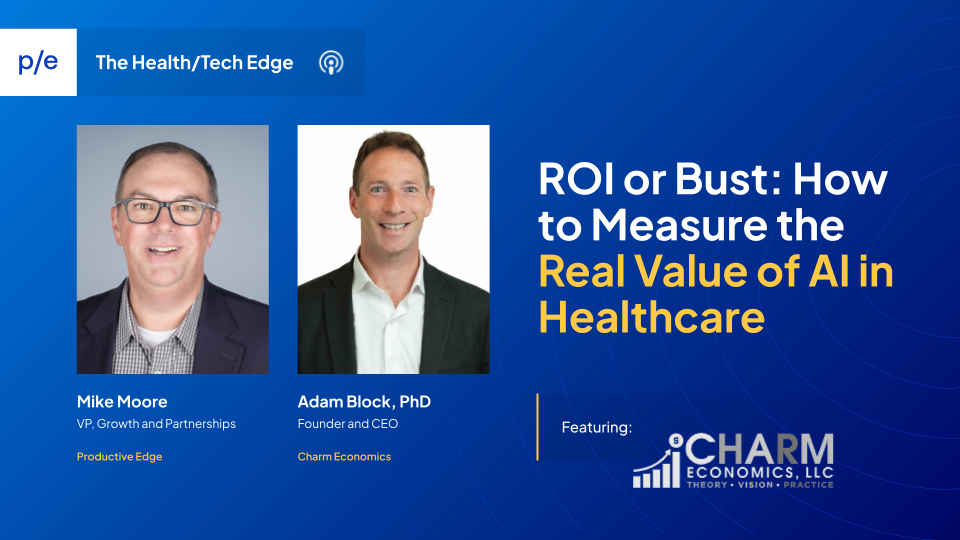Healthcare leaders are under pressure. They’re being told to cut costs, adopt AI, and demonstrate its effectiveness. But in a sea of bold claims and limited evidence, how can anyone measure whether an AI investment is actually delivering?
In this episode of Health/Tech Edge, I sit down with Adam Block, PhD, founder of Charm Economics and Charisma Health Solutions. Adam helps digital health and AI companies make the financial case for their solutions in a way that resonates with payers, providers, and CFOs.
We cover practical questions, including:
-
What really counts as ROI in healthcare?
-
Are AI projects showing more substantial returns than older tech initiatives?
-
Why are AI scribes getting so much traction with clinicians?
-
Is prior authorization automation helping or just creating more friction?
-
What do healthcare buyers actually want to see in an ROI model?
If you're building, buying, or just trying to understand AI in healthcare, this conversation cuts through the noise.
Key Takeaways from the Conversation
ROI Isn't Just About Savings
Revenue is often easier to prove and more valuable than calculated savings. For example, if a tool helps improve risk scores or quality bonuses, that revenue is traceable and easier for a CFO to act on. Avoiding hypothetical visits or events is harder to quantify and usually more challenging to sell.
Choose Clear, Familiar Metrics
Metrics like RVUs and average length of stay are better than vague productivity claims. If the metric is commonly used in operations or finance, it’s more likely to stick. Don't create a new one just for the sake of the pitch.
AI Scribes Are a Rare Win
Some AI tools actually make life easier for providers. Scribes reduce after-hours charting (known as "pajama time") and improve clinical documentation. When providers want to use a tool, adoption takes care of itself.
Prior Authorization Is Turning Into an Arms Race
AI is now being used on both sides of the prior auth process. Providers use it to submit faster. Payers tighten review rules to keep pace. The result is more back and forth, more cost, and no added value to patient care.
A Solid ROI Model Needs Proof
The best business cases are built from public health data, peer-reviewed studies, and real financial outcomes. If your claims can be traced back to trusted sources, you're in a much stronger position when presenting to a buyer.
Listen to the Full Episode
More from Adam Block
-
LinkedIn: Adam Block
-
Website: Charm Economics
About Health/Tech Edge
The Health/Tech Edge podcast is hosted by Mike Moore, VP of Growth at Productive Edge. Each episode features real conversations with leaders who are reshaping healthcare through practical technology.


.png)

